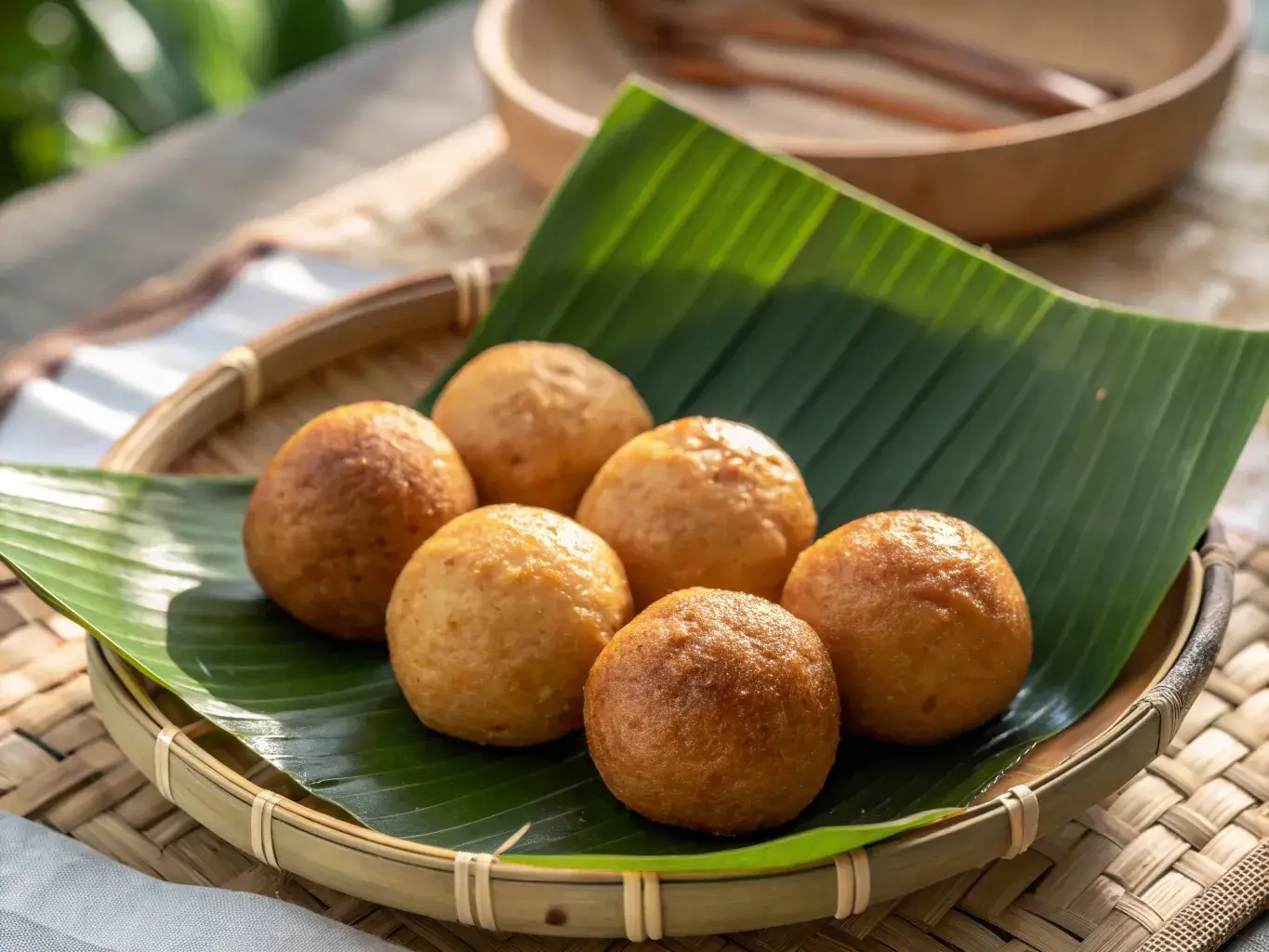Keke Saiga is a beloved deep-fried Samoan dough treat—crispy on the outside, fluffy on the inside, and full of cultural meaning. At Recipes of Kitchen – The Gluten-Free Sweet Kitchen, I’m Lidia Bellacci, and I discovered this traditional island favorite during my journey into gluten-free baking. While Keke Saiga is traditionally made with wheat flour, its simple ingredients and island charm make it perfect for adaptation.
In this guide, I’ll show you how to enjoy it both authentically and with gluten-free alternatives, so everyone can taste the joy.
Uncovering the Origins and Deeper Meaning of Keke Saiga
What Is Keke Saiga in English?
In English, Keke Saiga translates to “fried cake” or “fried dough.” It’s a simple yet satisfying snack made from basic ingredients like flour, sugar, and milk, mixed into a dough and deep-fried to golden perfection. Often compared to doughnut holes, these small treats are a staple in Samoan homes and local celebrations.
Traditional Names and Variations Across Polynesia
You’ll find similar versions of Keke Saiga throughout the Pacific Islands. In Tonga, it’s known as just “keke,” while Fijians enjoy “babakau.” The ingredients are often the same, but some add ripe bananas, nutmeg, or coconut milk to bring out deeper flavor. These variations reflect the shared roots and diverse adaptations across island cultures, making Keke Saiga more than just a recipe; it’s a piece of history served warm.
Cultural Significance in Samoan Life
Why Keke Saiga Is More Than Just a Snack
In Samoan culture, food isn’t just nourishment—it’s a connection. Ka eke Saiga holds a special place at the center of many family gatherings, church events, and community celebrations. You’ll often find these golden, deep-fried treats piled high on platters during Sunday to’ona’i (family lunch), village fundraisers, or after-church teas. They’re a symbol of hospitality, abundance, and love.
For many, Keke Saiga carries memories of childhood—watching elders mix the dough by hand, smelling the aroma of oil heating, and sneaking the first hot piece off the plate. It’s a snack that connects generations. Just like banana bread in some American homes, Keke Saiga in Samoa is comfort food at its finest.
Whether eaten with a warm cup of koko Samoa (local hot cocoa) or packed for school lunches, it brings people together. It’s that simple, honest treat everyone expects at home gatherings—and no one can stop at just one.
Samoan Family Gatherings and Festival Roles
During major holidays and fa’alavelave (important family obligations like weddings or funerals), Keke Saiga becomes part of the ceremonial spread. These events often involve cooking in large batches for extended families, and fried snacks like this one are among the easiest to prepare in quantity.
In some villages, the preparation of Keke Saiga is a community activity—multiple generations working side by side in the kitchen. The dough is rolled, shaped, fried, and served all while stories are told and laughter echoes through the fale (house).
It’s more than just flour and sugar—it’s a living tradition. For Samoans living abroad, making Keke Saiga becomes a heartfelt way to stay connected to their cultural roots.
Don’t miss our cultural dessert twists like Dalgona Gluten-Free Mug Cake for easy sweet options that blend tradition with today’s kitchen.
Print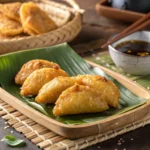
Keke Saiga – The Ultimate Guide to This Samoan Deep-Fried Treat
- Total Time: 20 minutes
- Yield: 8 fritters 1x
- Diet: Vegetarian
Description
Keke Saiga is a traditional Samoan sweet pancake-like treat made with ripe bananas and simple pantry ingredients—crispy on the edges and soft on the inside.
Ingredients
2 ripe bananas, mashed
1 cup all-purpose flour
1/4 cup sugar (adjust to taste)
1/4 tsp salt
1/2 tsp baking powder
1/4 cup water or coconut milk
1/2 tsp vanilla extract (optional)
Oil for frying
Instructions
1. In a mixing bowl, mash the bananas until smooth.
2. Add flour, sugar, salt, and baking powder to the mashed bananas.
3. Stir in water or coconut milk gradually to form a thick, scoopable batter.
4. Add vanilla extract if using and mix until combined.
5. Heat oil in a frying pan over medium heat.
6. Drop spoonfuls of batter into the hot oil, flattening slightly with the back of a spoon.
7. Fry for 2–3 minutes per side, or until golden brown and cooked through.
8. Remove and drain on paper towels.
9. Serve warm, plain or with butter, jam, or syrup.
Notes
Use very ripe bananas for the sweetest flavor.
You can add cinnamon or nutmeg to the batter for extra warmth.
These are best enjoyed fresh but can be reheated in a toaster oven.
Serve with coconut syrup or a dusting of powdered sugar for a treat.
- Prep Time: 10 minutes
- Cook Time: 10 minutes
- Category: Snack
- Method: Frying
- Cuisine: Samoan
Nutrition
- Serving Size: 1 fritter
- Calories: 130
- Sugar: 6g
- Sodium: 80mg
- Fat: 6g
- Saturated Fat: 2g
- Unsaturated Fat: 3g
- Trans Fat: 0g
- Carbohydrates: 18g
- Fiber: 1g
- Protein: 2g
- Cholesterol: 0mg
Keywords: keke saiga, Samoan banana fritter, island dessert, banana pancake
Key Ingredients That Define Keke Saiga
What Is Keke Made Of?
At its heart, Keke Saiga is incredibly simple. This is part of what makes it so beloved across Samoa and other Pacific Islands—it uses basic pantry ingredients, yet delivers rich, comforting flavor and texture. The classic recipe often includes:
| Traditional Ingredient | Purpose |
|---|---|
| All-purpose flour | Main structure of the dough |
| Sugar | Adds sweetness |
| Baking powder | Creates rise and fluffiness |
| Milk or coconut milk | Moisture and flavor |
| Eggs (optional) | Enriches texture (varies by family) |
| Vegetable oil | For deep frying |
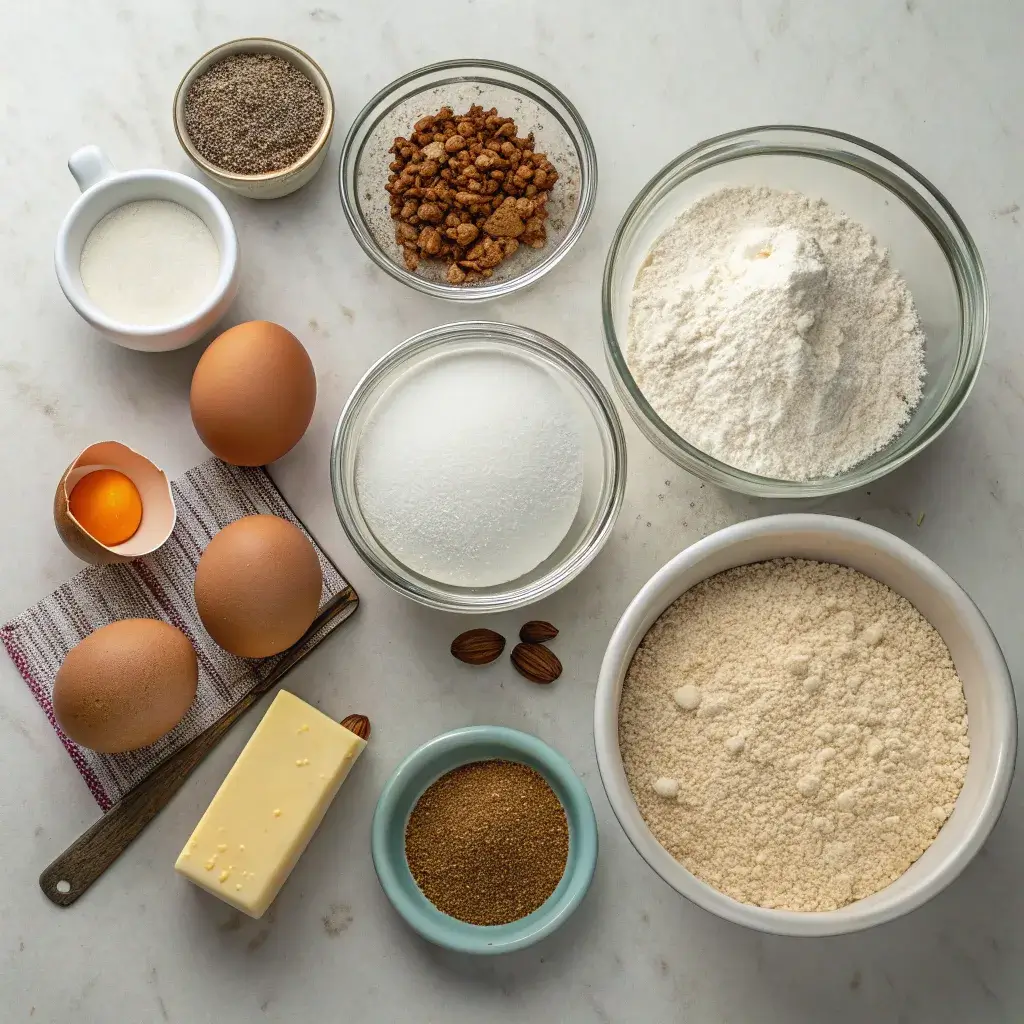
Some families add a pinch of salt, vanilla extract, or even mashed bananas to personalize their batch. Others include nutmeg or cinnamon for extra depth. The dough is usually thick and sticky—perfect for shaping into small balls before frying.
And while Keke Saiga is traditionally sweet, it’s not overwhelmingly sugary. It’s the golden crust, pillowy inside, and comforting aroma that win hearts every time.
Common Substitutions and Variations (Gluten-Free, Vegan)
One of the best things about Keke Saiga is how easily it can be adapted—especially if you’re gluten-free like me. I’ve worked through plenty of variations in Recipes of Kitchen – The Gluten-Free Sweet Kitchen to make sure nobody misses out on this island favorite.
Gluten-Free Options
Swap all-purpose flour with a gluten-free flour blend (preferably one with xanthan gum or psyllium husk for elasticity). Almond flour and coconut flour combinations can also work, though they may yield a slightly denser texture.
Vegan Adaptation
To go eggless, simply omit the egg or replace it with 1 tablespoon of ground flaxseed mixed with 2.5 tablespoons of water (let it sit 10 minutes to form a gel). Coconut milk adds a luxurious richness and a deep, authentic flavor that elevates every bite.
Healthier Alternatives
If you’re aiming to cut back on sugar, try using coconut sugar or maple syrup for a more natural sweetness. You can also air-fry the dough balls—they’ll be lighter, though not quite as crisp as the traditional deep-fried version.
Here’s a quick comparison table for substitutions:
| Ingredient | Alternative (Gluten-Free/Vegan) |
|---|---|
| All-purpose flour | Gluten-free flour blend / almond + coconut |
| Milk | Coconut milk / oat milk |
| Egg (optional) | Flaxseed egg / applesauce |
| Sugar | Coconut sugar / maple syrup |
| Oil for frying | Avocado oil / canola oil |
Step-by-Step Guide: How to Make Samoan Keke Saiga
Essential Tools and Prep Tips Before You Start
Before diving into the recipe, make sure your kitchen is set up for success. Here’s what you’ll need:
Basic Equipment Checklist:
- Large mixing bowl
- Whisk or wooden spoon
- Frying pan or deep pot
- Slotted spoon or spider strainer
- Paper towels for draining
- Ice cream scoop or spoon for shaping dough
Helpful Prep Tips:
- Slowly and consistently preheat your oil to 350°F (175°C) for even cooking and that perfect golden crust.
- Don’t overcrowd your frying pan—Keke Saiga puffs up as it cooks.
- Mix wet and dry ingredients separately before combining.
- Test one small dough ball first to check oil temp and flavor.
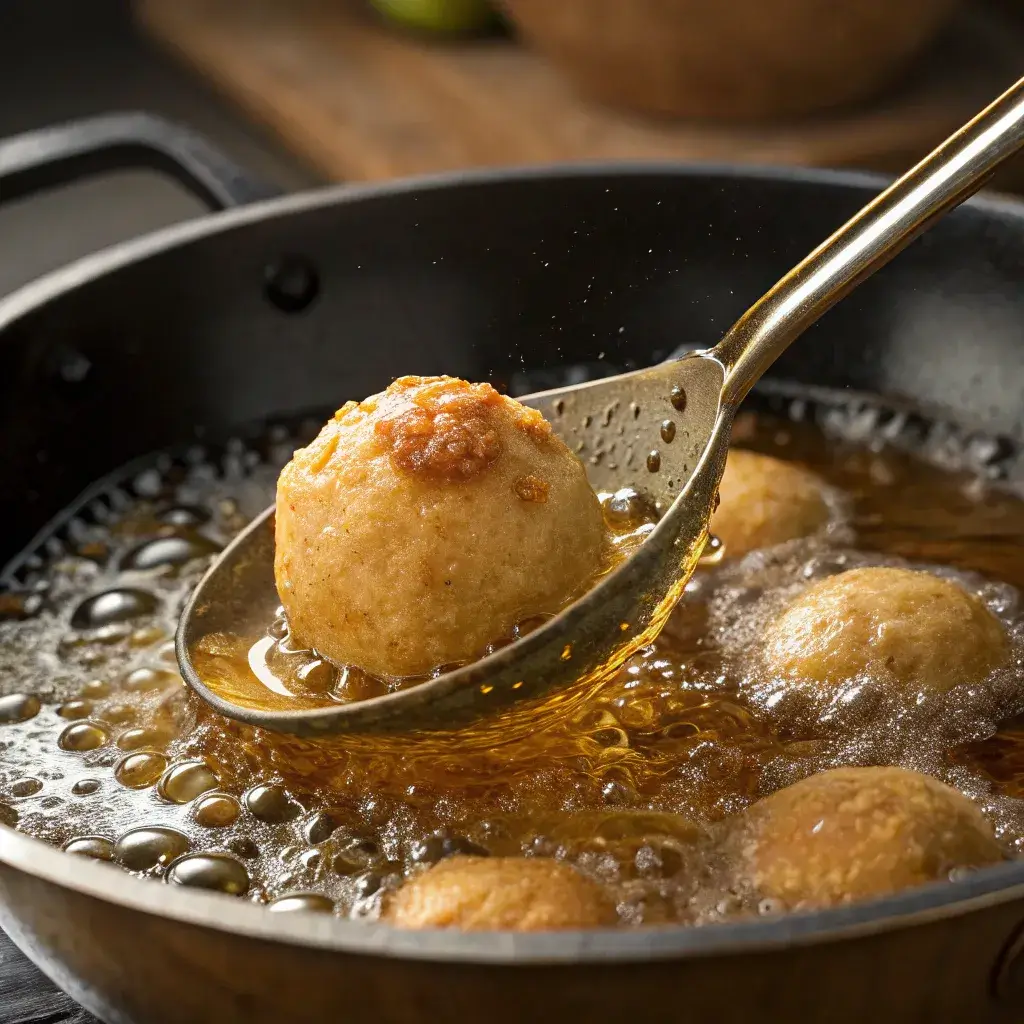
Now, let’s make some magic happen.
Traditional Keke Saiga Recipe (Authentic Style)
Here’s the classic, time-honored version cherished in many Samoan households:
Ingredients:
- 2 cups all-purpose flour
- 1 tsp baking powder
- ¼ tsp salt
- 3 tbsp sugar (adjust to taste)
- 1 cup milk or coconut milk
- 1 egg (optional)
- Oil for deep frying
Instructions:
- Mix the Dry Ingredients: In a large bowl, whisk together the flour, baking powder, salt, and sugar until well combined.
- Add the Wet Ingredients: Gradually stir in the milk (and the egg, if using) until a smooth, thick batter forms.
- Heat Oil: Fill your pot with oil (about 2–3 inches deep). Heat to medium (around 350°F).
- Shape the Dough: Scoop small spoonfuls of the batter—or shape gently with your hands—and carefully drop them into the hot oil.
- Fry Until Golden: Cook for 3–4 minutes, flipping halfway.
- Drain and Cool: Remove and place on paper towels to drain excess oil.
- Serve Warm: Enjoy plain or with a side of koko Samoa.
Gluten-Free Keke Saiga Recipe (Tested & Approved)
Here’s my Recipes of Kitchen spin for gluten-sensitive or Celiac-friendly bakers:
Ingredients:
- 1 ½ cups gluten-free flour blend (with xanthan gum)
- ½ cup almond flour
- 1 tsp baking powder
- ¼ tsp salt
- 3 tbsp coconut sugar
- 1 cup coconut milk
- 1 flax egg (1 tbsp flaxseed + 2.5 tbsp water)
- Oil for frying
Instructions:
- Make Flax Egg: Mix flaxseed and water, let sit 10 minutes.
- Mix Dry: Combine GF flour, almond flour, baking powder, salt, and sugar.
- Add the Wet Ingredients: Stir in the coconut milk and flax egg until the mixture comes together into a soft, cohesive dough.
- Fry: Follow same frying steps as traditional method. GF dough fries slightly quicker—watch closely.
- Cool & Enjoy: Let rest for a few minutes before serving. Texture improves as it sits.
Check out other quick alternatives like Strawberry Blondies for a fusion of chewy sweetness.
Tongan and Polynesian Variants of Keke
Is Keke Tongan? Exploring Regional Differences
Yes, keke is also a popular treat in Tongan cuisine, but there are key differences from the Samoan Keke Saiga. In Tonga, the term “keke” generally refers to deep-fried dough as well, but it often includes ripe bananas or vanilla, giving it a naturally sweet and moist texture. It’s commonly known as Keke ‘Isite or Keke Vai depending on how it’s made.
Unlike Keke Saiga, which is firmer and typically served plain or with coconut sauce, Tongan versions tend to be softer and are often rolled in sugar or served with jams. The batter is usually looser, which makes the texture resemble a fritter more than a dough ball.
Here’s a quick comparison:
| Feature | Samoan Keke Saiga | Tongan Keke |
|---|---|---|
| Texture | Firm, fluffy inside | Soft, moist |
| Sweetener | Sugar in dough | Often sweetened with banana |
| Add-ins | Simple, no filling | Mashed bananas, vanilla |
| Common Pairings | Koko Samoa, tea | Fruit jams, powdered sugar |
Despite the differences, both are staples at island gatherings—and both are worth trying!
Keke Saiga vs. Keke Pua’a: Know the Difference
It’s easy to confuse Keke Saiga with Keke Pua’a, but they’re totally different in both preparation and purpose. Keke Pua’a is more like a Samoan-style meat bun, filled with seasoned pork and steamed or fried. Think of it as the Pacific version of a savory bao bun.
| Keke Type | Filling | Cooking Style | Sweet or Savory? |
|---|---|---|---|
| Keke Saiga | None | Deep-fried | Sweet |
| Keke Pua’a | Pork or beef | Steamed or fried | Savory |
So if you’re craving something sweet and doughy, Keke Saiga is your go-to. For a hearty, savory snack, Keke Pua’a is the better pick.
Don’t miss our island-inspired treats like Gluten-Free Cloud Bread Dessert for more global comfort food ideas with a health twist.
Pro Tips for Frying the Perfect Keke
Oil Temperature, Texture, and Timing Secrets
Getting the right crisp texture in your Keke Saiga comes down to one key element: oil temperature. If the oil is too hot, the outside will brown too quickly and the inside remains raw. If the oil is too cool, the dough will absorb it, resulting in greasy, heavy keke.
The sweet spot? Maintain the oil at 350°F (175°C). Use a thermometer to ensure accuracy, or test the oil by dropping in a small dough ball—it should rise slowly and sizzle gently without burning.
Tips to nail it every time:
- Let the dough rest for 5–10 minutes before frying to allow the flour to fully hydrate and improve the texture.
- Use a spoon or cookie scoop to ensure even size.
- Fry in batches to avoid lowering the oil temp.
- Turn the keke balls halfway for even browning.
- Fry for 3–4 minutes or until golden brown and puffed.
What Makes It Golden and Crispy Outside but Soft Inside
The perfect Keke Saiga has a slightly crispy, golden crust with a soft, chewy interior. Here’s how to get there:
- Sugar in the dough helps browning.
- Coconut milk adds richness and a subtle crust boost.
- Let the fried keke rest on paper towels—this prevents sogginess.
- Serve warm: they harden a bit as they cool.
Serving and Pairing Ideas for Keke Saiga
Dips, Sauces, and Beverages to Serve With It
Keke Saiga is most often eaten on its own—but pairing it with something warm or sweet makes it unforgettable.
Here are some serving ideas:
| Pair It With… | Why It Works |
|---|---|
| Koko Samoa (Samoan cocoa) | Traditional pairing; earthy & rich |
| Coconut caramel sauce | Adds creamy sweetness |
| Tropical jams (guava, mango) | Fruity and bright contrast |
| Dusting of powdered sugar | Visual and flavor lift |
| Whipped coconut cream | Great dairy-free option |
Tip: You can also turn leftover keke into a dessert base—top with sliced bananas, honey, or even ice cream.
Keke for Breakfast, Dessert, or Snack?
The beauty of Keke Saiga is that it fits any time of day:
- Breakfast: Served with tea or coffee.
- Afternoon snack: Popular in school lunches.
- Dessert: Paired with coconut sauce or drizzled honey.
No matter when you serve it, keke always hits the spot.
Nutritional Insights and Healthier Alternatives
Caloric Profile of Traditional Keke
Here’s a quick look at what one standard Keke Saiga (about 2-inch ball) contains:
| Nutrient | Approximate Value |
|---|---|
| Calories | 110–140 per ball |
| Carbohydrates | 16g |
| Sugar | 3g–5g |
| Fat | 6g |
| Protein | 2g |
Keep in mind, it varies depending on the size and how long it’s fried.
Health-Conscious Swaps Without Sacrificing Flavor
Want to make your Keke Saiga a bit lighter? Try these:
- Use coconut sugar instead of refined sugar.
- Air fry instead of deep frying (brush lightly with oil).
- Replace dairy with plant-based milk like oat or almond.
- Use gluten-free flour blends with higher fiber (e.g., sorghum, brown rice).
- Reduce portion size—smaller balls = fewer calories.
These changes make it easier to enjoy your keke guilt-free.
Keke Saiga in the World of Social Media and Food Blogging
How Samoan Recipes Are Gaining Global Fans
From Instagram reels to TikTok kitchen hacks, Keke Saiga is popping up in global food circles more than ever. Food creators from Hawaii to New Zealand are reintroducing Pacific Island dishes to new audiences—and people are loving it.
Keke’s rustic, real-food charm fits perfectly with today’s food trends—simple, nostalgic, and made to be shared.
And thanks to the growing Samoan diaspora and food bloggers, recipes like Keke Saiga are no longer confined to island homes—they’re becoming part of global fusion cuisine.
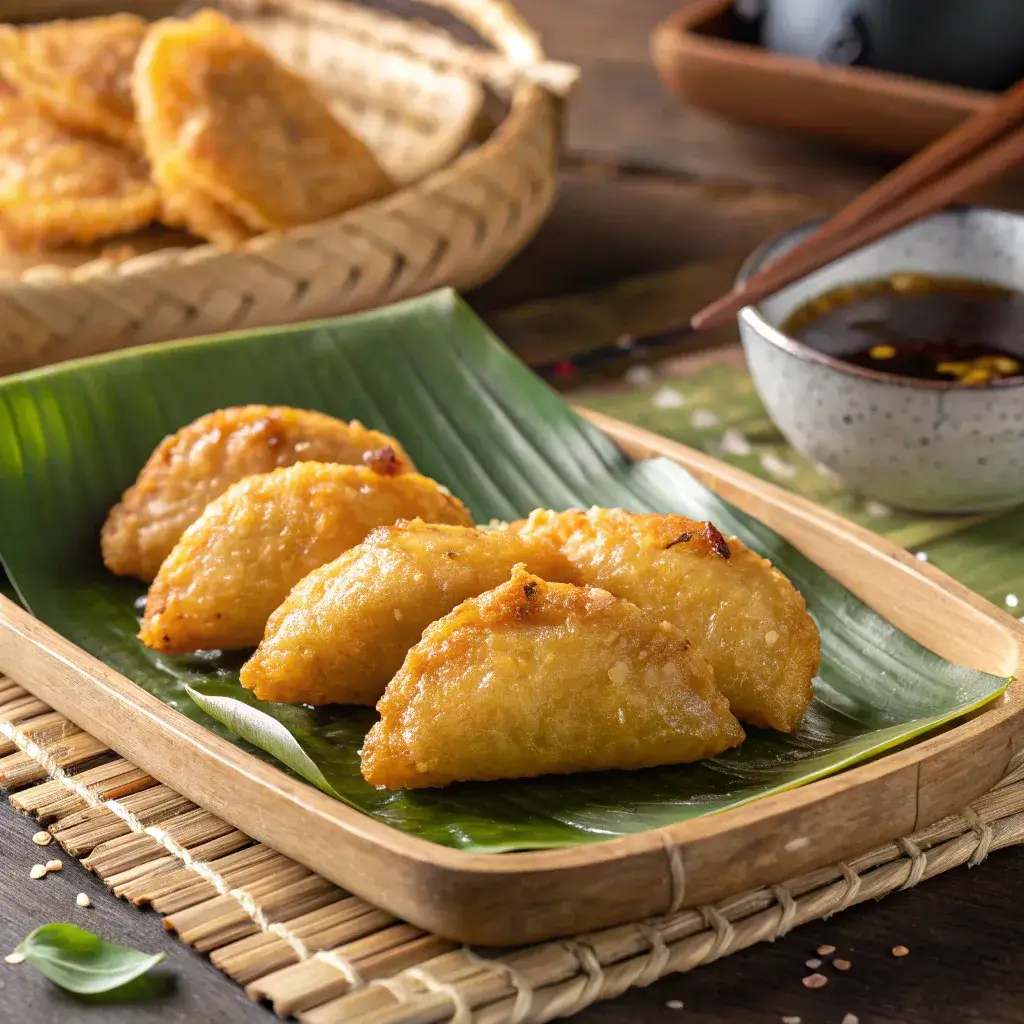
Tips for Sharing Your Own Keke Online – Photos, Captions & More
Want to showcase your version online? Here’s how to make it stand out:
- Lighting: Natural light makes fried keke glow.
- Close-ups: Show texture—crispy edges, fluffy inside.
- Captions: Use storytelling. Mention your heritage or the recipe’s roots.
- Hashtags: #SamoanFood #KekeSaiga #IslandRecipes #FriedDoughLove
Pro Tip: For a classic island touch, stack a few keke in a small basket lined with parchment paper—it’s as charming as it is delicious!
Frequently Asked Questions About Keke Saiga
What is Keke Saiga in English?
Keke Saiga in English means “fried cake” or “fried dough.” It’s a Samoan deep-fried dough ball that’s lightly sweet and often served during breakfast or family events.
How to make Samoan Keke Saiga?
Combine flour, sugar, baking powder, and milk to form a thick dough. Scoop and deep-fry until golden brown. For a gluten-free version, use a gluten-free flour blend and your favorite plant-based milk.
Is Keke Tongan?
Yes, Tongan cuisine has a similar fried treat also called “keke,” though the texture and ingredients can differ. Tongan versions often include mashed banana and tend to be softer and more cake-like than the crispier Samoan Keke Saiga.
What is Keke made of?
Traditional Keke is made with a simple blend of flour, sugar, baking powder, and milk. Some variations add eggs, mashed banana, or coconut milk for extra richness. Each piece is deep-fried until golden on the outside and soft and fluffy inside.
Why Keke Saiga Deserves a Spot in Your Kitchen
Keke Saiga is more than just a fried snack—it’s a celebration of island culture, tradition, and family. Whether you make it the classic way or adapt it for a gluten-free diet like I do here at Recipes of Kitchen, it’s a recipe that warms the heart and satisfies the soul. With simple ingredients and big flavor, this Samoan treat proves that the best recipes don’t need to be complicated—they just need to be made with love.
Looking for more fusion desserts? Discover more in Strawberry Blondies – A Gluten-Free Favorite.

